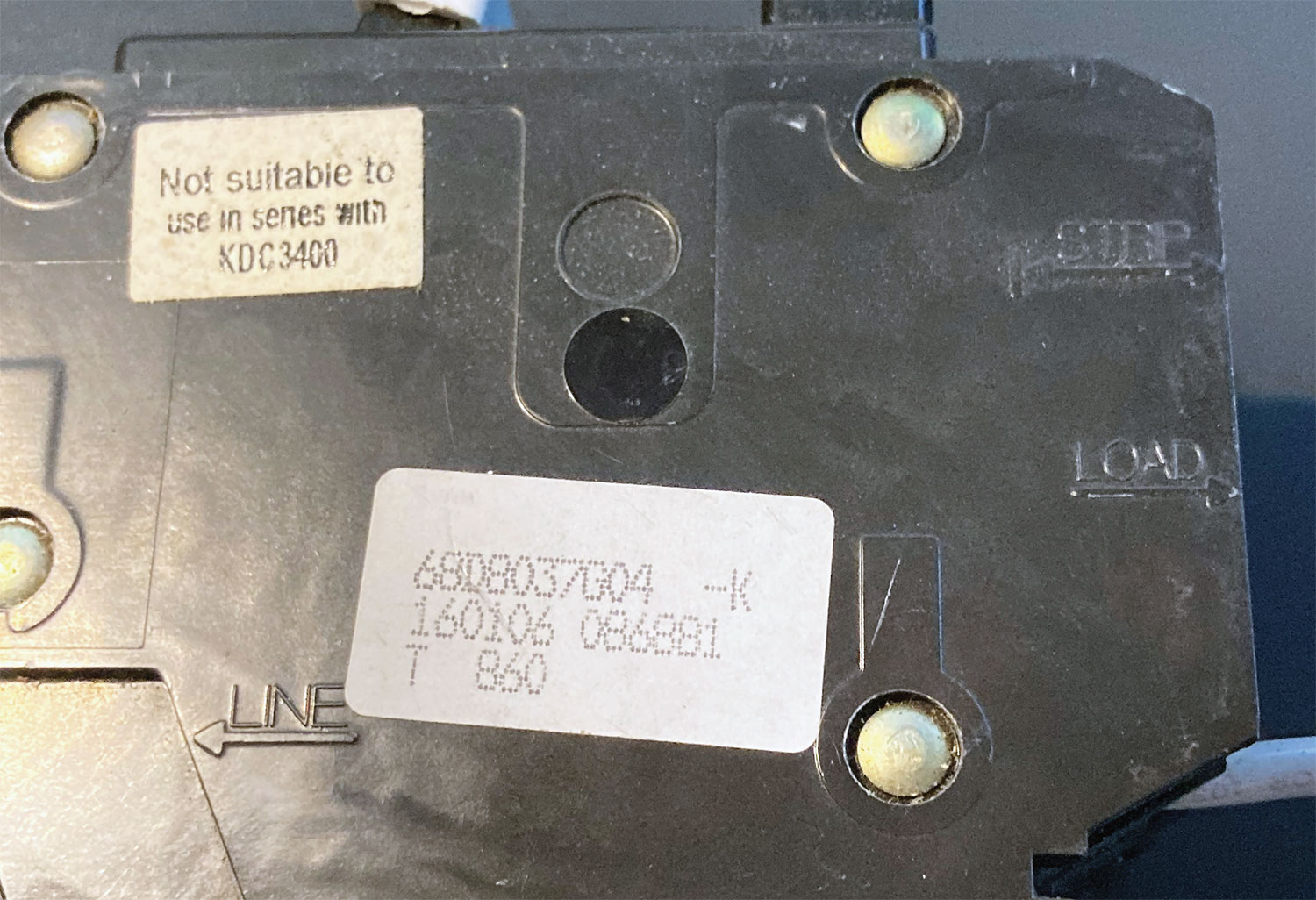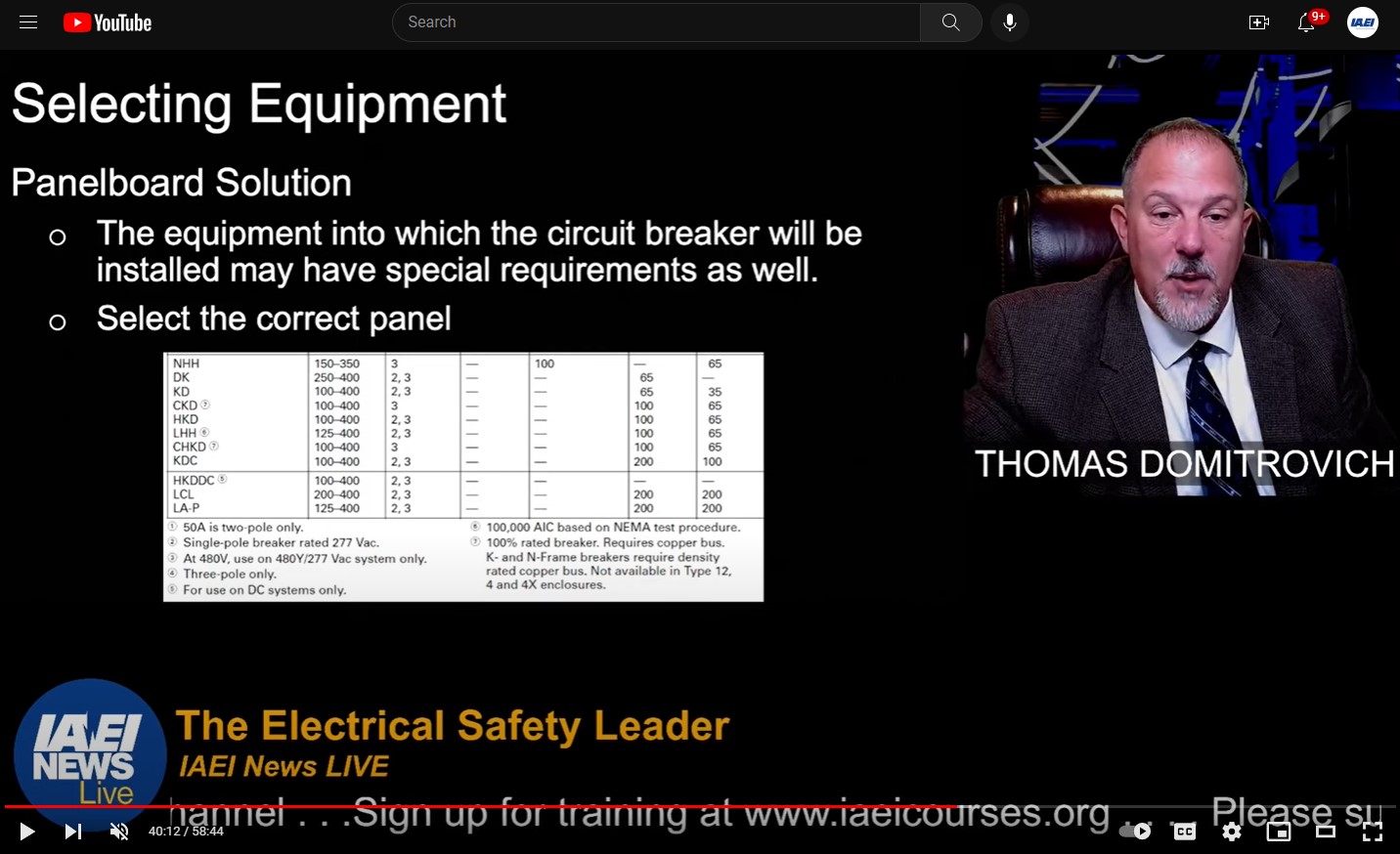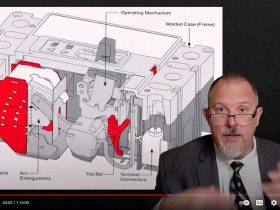The 2002 National Electrical Code (NEC) has an added notation that can be confusing. The notion is a fine print note (FPN) to 240.85 of the NEC that reads, “Proper application of molded-case circuit breakers on 3-phase systems, other than solidly grounded WYE, particularly on corner-grounded delta systems, considers the individual pole interrupting capability.” A FPN is non-mandatory information according to 90.5 of the NEC. This document will explore its meaning.
There was considerable controversy among the NEC panel about whether such a statement will be helpful to users. While there is no reason for special attention for the generally applied distribution systems, there can be reason for care in applying MCCBs in the corner-grounded delta system.
MCCBs Provide Good Protection
MCCBs have been safely applied in industrial systems with an excellent record of performance since electricity became a common source of energy for industry. UL 489, the Standard for Safety for Molded-Case Circuit Breakers, Molded-Case Switches and Circuit Breaker Enclosures was developed and maintained to address the variety of systems in which MCCBs may be used. It has always included individual pole short-circuit tests, specifically to address the industrial systems. These tests are applied rigorously in certification of the products and annually throughout their production life. The FPN is not an indication that installed systems should be re-evaluated.
As we look around the world, we do not find any other standard for MCCBs that addresses individual pole short-circuit testing as comprehensively as does UL 489 and its North American counterparts. IEC 60898 covering household circuit breakers has recently added a requirement to test individual poles at a current level of 500 amperes. IEC 60947-2 covering commercial and industrial circuit breakers does not require any individual pole test on a general application circuit breaker. However, Appendix H covering special MCCBs for IT systems requires an individual pole test at 1.2 times the instantaneous tripping current. Also, Appendix C covering phased-earth systems (corner-grounded systems) requires a test at 25 percent of the interrupting rating.
The FPN does not address single-phase systems because testing in all cases rigorously covers these systems. Additionally, the FPN does not apply to 3-phase systems that are used in residential and commercial applications, because these systems are rigorously covered by testing. These covered systems include the center-point grounded 120/240 V, the 208Y/120 V and 480Y/277 V systems among others. In fact, testing comprehensively covers all of the systems identified in NEC 250.20(B).
Three Representative Systems
The three systems that best illustrate the range of all conditions are shown in figures 1, 2 and 3. They are the solidly-grounded WYE, the corner-grounded delta and the impedance-grounded WYE systems, respectively. Consider how a short circuit can occur that would involve an individual pole interruption and would not involve any other pole. If another pole is involved, it is sharing the energy of interruption so that a single-pole interruption is not involved. When one pole is involved alone, the question is whether the pole has been tested with the combination of both voltage and current that it will see under a fault condition.
Solidly-grounded WYE
For the solidly-grounded WYE system, either a L-N or a L-G fault would be detected and interrupted by a single pole. The L-N and L-G voltages are both phase voltages as opposed to being a L-L voltage. For a 480 V L-L system, the phase voltage is 277 V. For a 208 V system, the phase voltage is 120 V. The individual poles of a 3-phase MCCB are effectively tested at the full current value of the interrupting rating and at phase voltage when they interrupt the 3-phase short circuit in the high available fault test of UL 489. This combination of parameters occurs for the first pole to clear. Without exception, MCCBs used in these systems are fully capable of interrupting any short-circuit condition up to the value of the interrupting rating. [See figure 1]
Corner-grounded Delta
Now look at the corner-grounded delta system. A L-G fault would be detected and interrupted by the single pole of a MCCB. However, in this case the voltage is full L-L voltage. It is 480 V in a 480 V system or 208 V in a 208 V system. This voltage exceeds the phase voltage seen by the individual pole in the 3-phase test at the interrupting rating. In UL 489 testing, there is a single pole test at full L-L voltage. While it is at the highest voltage rating of the MCCB, it is at a limited test current that may be below the current that could flow in a L-G fault on this system. Two-pole MCCBs specifically intended for use in these systems are marked “”1F-3F”” as indicated in NEC 240-85. In both cases, 2-pole or 3-pole, it would be well for the engineer designing a corner- grounded system to verify that the tested current is not lower than the current that can flow in a fault or to select a MCCB rated for application on the corner-grounded system. [See figure 2]
Impedance-grounded WYE
Next look at the impedance-grounded WYE system. A L-N fault would be covered by test, the same as it is for the solidly-grounded WYE system. With respect to a L-G fault, the impedance would limit such a fault to a very low level of several amperes. Therefore, a MCCB is well rated and tested to interrupt a fault seen by an individual pole. However, if multiple, simultaneous faults are considered, there is a condition that may deserve attention. A L-G fault on one phase on the load side of the MCCB plus a simultaneous L-G fault on a different phase on the supply side of the MCCB would result in the condition shown in figure 4. In this case, full L-L voltage appears across the pole. The probability of such a condition becoming a problem for interruption by the MCCB is very low considering:
- Two simultaneous faults must occur.
- The impedance of L-G faults is such that the current is limited.
- Arcing is likely at one or both fault points, which would considerably limit short-circuit current.
- Arcing would most likely propagate to other phases due to ionized gases such that more than one pole would be involved.
- Actual fault path will involve another pole of an overcurrent protective device in many cases.
Note: Circuit breakers can react very rapidly to these types of arcing faults to clear the circuit. As the arcing fault current is increasing through one pole, the fault will most likely propagate to the other phases due to ionized gases. At the same time as the pole under fault trips, it is causing all poles of the circuit breaker to open simultaneously due to common trip. This circuit breaker feature will invariably allow the circuit breaker to clear the fault successfully while limiting the arcing current to levels well below the circuit breaker’s interrupting capability. [See figure 3]
In addition to these points, NEC 250.36 limits the application of impedance-grounded systems and requires ground detection systems to support early repair of the first fault thereby reducing the potential for occurrence of a second simultaneous fault. MCCBs can be safely applied in these systems. Depending on the specific protection needs and the anticipated maintenance of the facility, the design engineer may wish to verify the single pole test values against the system. Here, the straight voltage rating expressed as 600, 480 or 240 V should be used. The slash voltage ratings such as 600Y/346 and 480Y/277 are not intended for impedance-grounded systems.
Systems such as the impedance-grounded WYE system are utilized primarily in the process industries specifically to avoid having manufacturing processes interrupted by the occurrence of a single ground fault. To gain the value of the system, facilities using them must detect and repair any ground fault within a short time of its occurrence. The occurrence of a second ground fault anywhere in the system on a different phase will cause overcurrent devices to open and result in an outage. [See figure 4]
The three systems addressed above represent all but a small percentage of installations. In addition is the ungrounded delta system, the analysis of which is the same as for the impedance-grounded WYE system from the MCCB standpoint. There is also the center-point grounded delta system used in residential and commercial applications, which is comprehensively covered by testing.
Apply MCCBs with Confidence
Molded-case circuit breakers are rigorously tested overcurrent protective devices that can be applied with confidence for protection of residential, commercial and industrial systems. System designers applying MCCBs in industrial systems should be aware of short-circuit conditions related to single pole capabilities on corner-grounded delta systems. Where impedance-grounded systems are used, system designers must comply with NEC 250.36. Here, experience has shown that the standard circuit breaker with the straight voltage rating is suitable, especially when the first fault to ground is corrected rapidly. The FPN does not have to be confusing.










Find Us on Socials